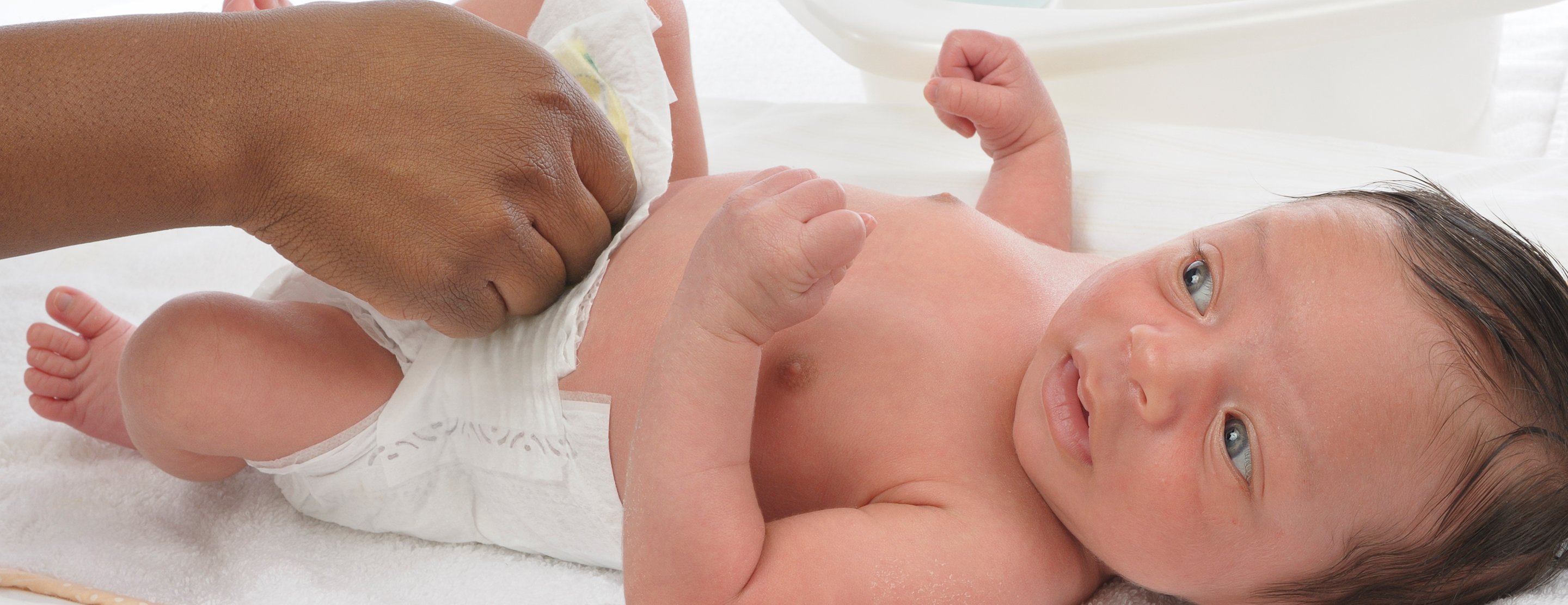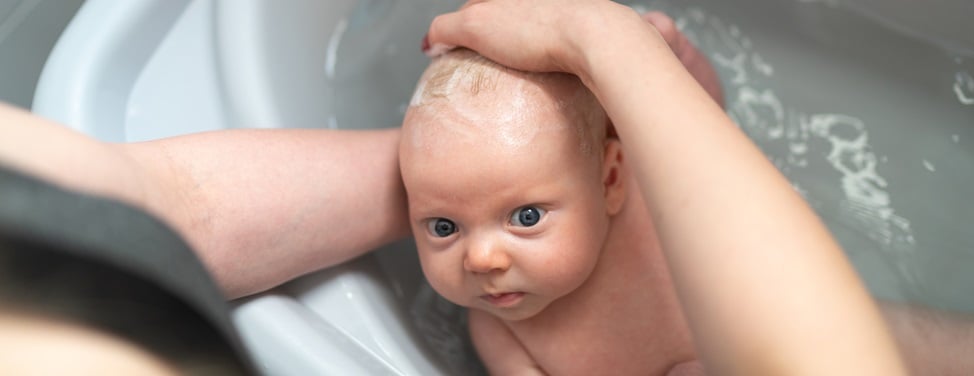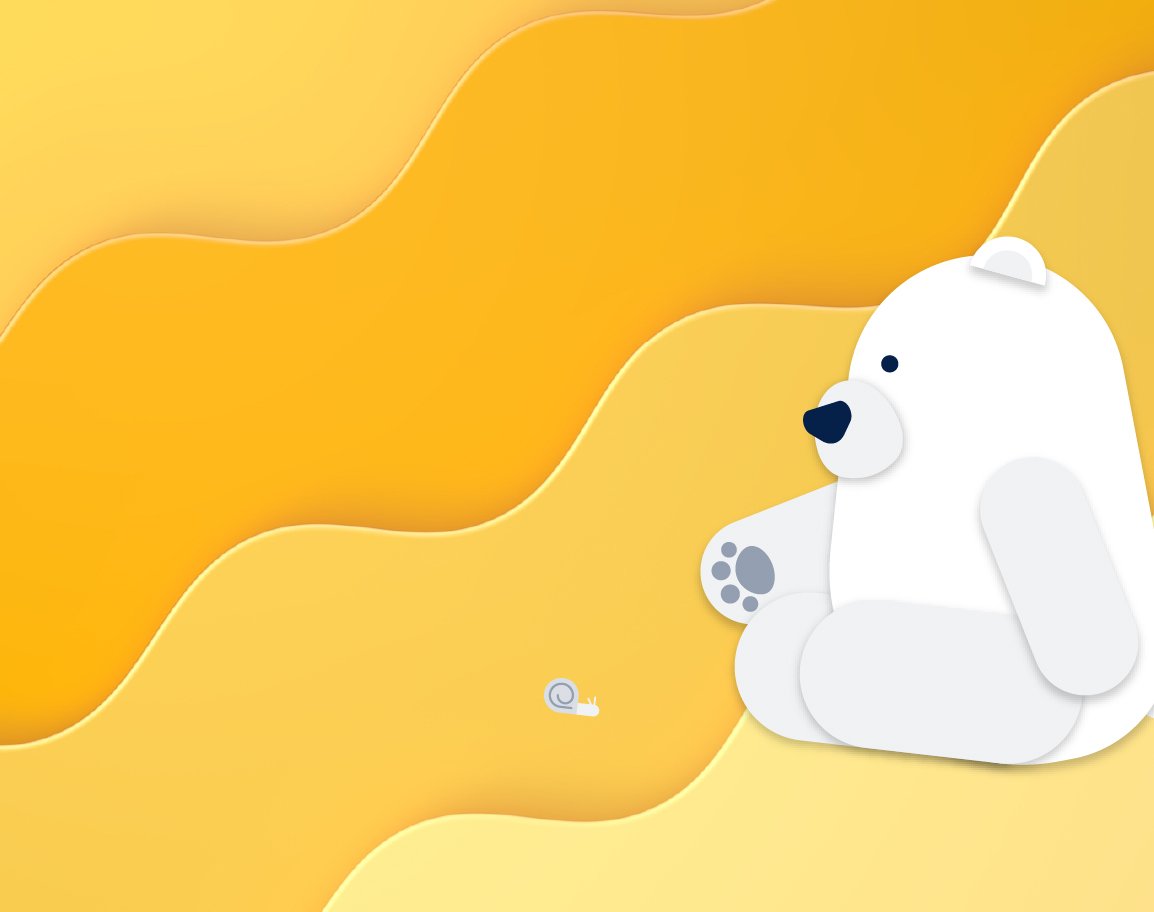As a parent, you may change as many as 3,000 diapers in baby’s first year of life.
Diapering
There’s nothing quite as wonderful and amazing as newborn skin. It protects baby from bacteria and germs, and helps her body hold a normal temperature. Use these research-based tips from the nurse experts of the Association of Women’s Health, Obstetric & Neonatal Nurses (AWHONN) to help keep your baby’s skin healthy, beautiful and soft.
For Girls
- Clean genital area with warm water.
- Always wipe diaper area from front to back.
For Circumcised Boys
- Clean the area with warm water ONLY (no soap) for the 3-4 days following circumcision.
- Follow any additional instructions from baby’s healthcare provider for care of the circumcision area.
For Uncircumcised Boys
- Clean genital area with a soft cloth and warm water.
- Never retract the skin that covers the tip of the penis (foreskin); this will happen on its own over time.
Follow these best practices to keep baby’s diaper area as clean and healthy as possible
- Always wash hands before and after changing your baby’s diaper to prevent the spread of germs.
- Clean baby’s genital area with warm water and a soft cloth, wiping from front to back.
- Avoid using baby or talcum powder; these items contain fine dust-like pieces that can irritate baby’s skin and lungs.
- Every time baby eats or nurses, check her diaper and change if needed. This helps prevent diaper rash.
- If diaper is soiled from a bowel movement, clean the area with warm water and a clean cloth or use a mild infant diaper wipe; avoid diaper wipes containing alcohol.
Extra Care When Changing Baby
Diapering
There’s nothing quite as wonderful and amazing as newborn skin. It protects baby from bacteria and germs, and helps her body hold a normal temperature. Use these research-based tips from the nurse experts of the Association of Women’s Health, Obstetric & Neonatal Nurses (AWHONN) to help keep your baby’s skin healthy, beautiful and soft.
Caring for Baby’s Umbilical Cord Stump
Umbilical cord stump care isn’t as mysterious as it may seem. Practice these healthy best habits until the cord dries and falls off on its own, typically by baby’s 3rd week of life. Unless your healthcare provider has told you otherwise, it’s OK to bathe baby with his cord stump still in place.
- Unless your healthcare provider has told you otherwise, go ahead and bathe baby with the cord stump intact; it’s OK to immerse it in water.
- Always wash your hands before touching baby’s cord stump.
- Fold the top of baby’s diaper down and away from the cord.
- Keep the cord area clean and dry. Never put any kind of bandage over the cord.
- Wipe the cord with warm water and a soft cloth if it gets soiled with baby’s waste.
- Avoid using rubbing alcohol or creams on the cord or covering it with a bandage.
Talk to your baby’s healthcare provider if your baby’s cord:
- Appears red.
- Has fluid or drainage around it.
- Smells bad.
- Hasn’t fallen off by baby’s 3rd week of life.
When It’s Diaper Rash
Change your baby’s diaper as soon as you see it’s been soiled. A common reason for diaper rash is that baby’s urine or stool stayed too long on her skin. Talk to your baby’s healthcare provider if your baby has a red rash in the diaper area that appears swollen, or has red bumps or raised areas.
- Apply a thick layer of petroleum jelly at each diaper change when the skin appears slightly red until the rash is gone.
- Apply a thick layer of white diaper cream that contains zinc oxide at each diaper change when the skin appears very red. Don’t remove this cream during diaper changes; it protects the skin. Simply rinse the area with warm water, pat or air dry and apply more diaper cream until the rash is gone.































